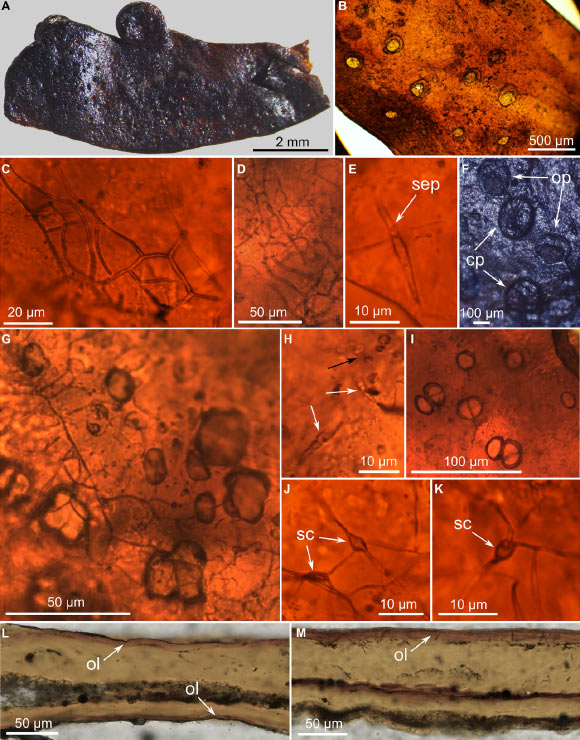Paleontologists have identified specimens that are 410 million years old. Spongiophyton nanus from the Ponta Grossa Formation in the Paraná Basin of Brazil as one of the oldest and most abundant lichens in the fossil record.
Artistic reconstruction Spongiophyton nanus in the Early Devonian in the high-latitude sedimentary system of the Paraná basin. Image credit: J. Lacerda.
The colonization of land and the subsequent evolution of complex terrestrial ecosystems was one of the most remarkable evolutionary events in the history of life.
This process has markedly affected both terrestrial and marine conditions, contributing to the reduction of atmospheric carbon dioxide, increased weathering and nutrient input to the oceans, soil development, and the evolution of major groups of terrestrial animals.
It is well known that early plants played a central role in the colonization of land, particularly in the establishment of the first plant ecosystems.
The earliest evidence of ancient land plants occurs in the form of cryptospores in the Middle Ordovician (460 million years ago), and macrofossils of early vascular plants appear in Silurian sediments (443–420 million years ago).
However, the role and presence of lichens at individual stages of the terrestrialization process remain unclear.
“Spongiophyton nanus shows a combination of fungi and algae similar to modern lichens,” said Dr. Bruno Becker-Kerber from Harvard University.
“Our results show that lichens were not marginal organisms, but key pioneers in transforming the Earth's surface.”
“They helped create the soil that allowed plants and animals to become established and diversify life on land.”

Morphology and internal structure Spongiophyton nanus. Image credit: Becker-Kerber etc.., doi: 10.1126/sciadv.adw7879.
The team's results show that ancient lichens first appeared in the cold polar regions of the supercontinent Gondwana, in areas that correspond to modern-day South America and Africa.
“Spongiophyton nanus is an unusual fossil in exceptional preservation. It's essentially mummified with organic matter intact,” said Australian National University professor Jochen Brox.
“The simple material of simple plants is cellulose. Lichens, on the other hand, are completely strange – they are made of the same material that makes beetles and other insects tough – chitin.”
“Chitin is saturated with the element nitrogen. When we analyzed Spongiophyton nanuswe got a huge nitrogen signal that had never been seen before.”
“It’s rare to get such a clear result, it was a Eureka moment.”
“Lichens continue to play a critical role today in soil production, nutrient recycling and carbon sequestration in extreme environments from deserts to polar regions.”
“However, their origins remain unclear due to their fragile nature and sparse fossil record.”
“This work shows how important it is to combine traditional methodologies with advanced technologies,” said Dr. Nathalie L. Arcilla, a researcher at the Brazilian Synchrotron Light Laboratory.
“Initial measurements led us to key areas of interest, and only then were we able to collect 3D nanometric images revealing the complex fungal and algal networks that define Spongiophyton nanus like a real lichen.”
teams paper was published this week in the magazine Achievements of science.
_____
Bruno Becker-Kerber etc.. 2025. Origin of lichens during the colonization of the terrestrial environment. Achievements of science 11 (44); two: 10.1126/sciadv.adw7879








